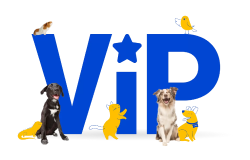

Repti Feast Springtail Culture
Transform your terra with ReptiFauna™ Springtail Culture. Springtails help control mold and fungus and decomposing matter, contributing to a healtier, more natural habitat. This helps create a clean space for your animal while reducing the overall physical maintenance of your habitat. Once added to your habitat, springtails will feed on the naturally decomposing organics, molds, and fungus available, making them part of the habitat janitorial dream team. Create a self-sustaining, bioactive habitat
• Thrive in moist, humid habitats
• Mature into adults at 6 weeks of age
• Reproduce rapidly in the dark
• Can thrive with isopods in a bioactive habitat
 Please select a store
Please select a store
 Add an address to check availability
Add an address to check availability

Description
Description
Product Description
Transform your terra with ReptiFauna™ Springtail Culture. Springtails help control mold and fungus and decomposing matter, contributing to a healtier, more natural habitat. This helps create a clean space for your animal while reducing the overall physical maintenance of your habitat. Once added to your habitat, springtails will feed on the naturally decomposing organics, molds, and fungus available, making them part of the habitat janitorial dream team. Create a self-sustaining, bioactive habitat
• Thrive in moist, humid habitats
• Mature into adults at 6 weeks of age
• Reproduce rapidly in the dark
• Can thrive with isopods in a bioactive habitat
Feeding Instructions
Springtails thrive off of a steady supply of decomposing organic materials produced in a bio active habitat. Adding materials such as ReptiFauna leaves and pods will help build a solid foundation for lasting colonies in your habitat.
Habitat and Care
Habitat and Care
When choosing Springtail Culture for your reptile’s enclosure, consider their ideal environment. Ensure they can coexist peacefully with your reptile.
Springtails thrive in damp bio active environments moist substrate, and decaying organic matter such as fallen leaves and rotting wood. They naturally feed on fungi, algae, and other organic detritus and will continue to colonize in a well established habitat. Once established, no additional food is needed as long as the habitat remains stable.
Product Description
Transform your terra with ReptiFauna™ Springtail Culture. Springtails help control mold and fungus and decomposing matter, contributing to a healtier, more natural habitat. This helps create a clean space for your animal while reducing the overall physical maintenance of your habitat. Once added to your habitat, springtails will feed on the naturally decomposing organics, molds, and fungus available, making them part of the habitat janitorial dream team. Create a self-sustaining, bioactive habitat
• Thrive in moist, humid habitats
• Mature into adults at 6 weeks of age
• Reproduce rapidly in the dark
• Can thrive with isopods in a bioactive habitat
Feeding Instructions
Springtails thrive off of a steady supply of decomposing organic materials produced in a bio active habitat. Adding materials such as ReptiFauna leaves and pods will help build a solid foundation for lasting colonies in your habitat.
Habitat and Care
When choosing Springtail Culture for your reptile’s enclosure, consider their ideal environment. Ensure they can coexist peacefully with your reptile.
Springtails thrive in damp bio active environments moist substrate, and decaying organic matter such as fallen leaves and rotting wood. They naturally feed on fungi, algae, and other organic detritus and will continue to colonize in a well established habitat. Once established, no additional food is needed as long as the habitat remains stable.









